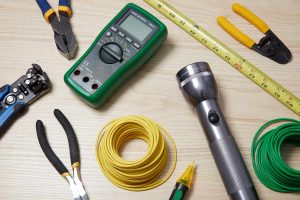BASIC ELECTRICITY|BASIC TECH JSS 2 |THIRD TERM WEEK 8
BASIC ELECTRICITY|BASIC TECH JSS 2 |THIRD TERM WEEK 8
BASIC ELECTRICITY
-
Electricity measuring instruments
-
Simple electrical calculation
By the end of the lesson, Students should be able to:
Differentiate the various electricity measuring instruments and device.
Explain what each of them does
Do simple calculations on electricity.

What Is Thermal Energy
Definition of Electricity:
Electricity is the flow of electric charge through a conductor, typically resulting from the movement of electrons. It is a form of energy that powers various devices and systems.
Electricity Measuring Instruments:
Voltmeter: A voltmeter measures the voltage difference between two points in an electrical circuit. It is connected in parallel to the component or portion of the circuit being measured.
Ammeter: An ammeter measures the electric current flowing through a conductor or circuit. It is connected in series to the circuit, allowing the current to pass through it.
Ohmmeter: An ohmmeter measures the electrical resistance of a circuit element or component. It is connected across the component being measured, and it provides a reading in ohms (Ω).
Functions of Electricity Measuring Instruments:
Voltmeter: Measures voltage to determine potential difference in a circuit.
Ammeter: Measures current flow to assess the rate of electron movement in a circuit.
Ohmmeter: Measures resistance to evaluate the opposition to current flow within a component.
Simple Electrical Calculations:
Ohm’s Law:
V = I * R
Where V is voltage (in volts), I is current (in amperes), and R is resistance (in ohms).
Power Calculation:
P = V * I
Where P is power (in watts), V is voltage (in volts), and I is current (in amperes).
Example Calculation:
Given:
Voltage (V) = 12 volts
Current (I) = 2 amperes
Resistance (R) = 6 ohms
Using Ohm’s Law:
V = I * R
12V = 2A * 6Ω
Calculating Power:
P = V * I
P = 12V * 2A
P = 24 watts
Conclusion
Understanding basic electricity concepts, measuring instruments, and simple calculations is fundamental for anyone working with electrical systems. Mastery of these concepts enables individuals to analyze circuits, troubleshoot issues, and design efficient electrical systems.






